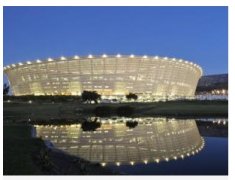ProPhotonix Ltd raises cash, targets new LED markets18 Jul 2011Although best known for machine-vision products, ProPhotonix Ltd is looking to expand into other markets, such as medical and illumination, after raising cash from the sale of shares. ProPhotonix Limited, a designer and manufacturer of LED light-engines and laser-diode modules with operations LED miniscape tree in Ireland and the UK, has raised approximately GBP 3.255 million before expenses from the sale of 23.25 million new shares.
The company said in its that the funds would be used to "capitalize on the opportunities available in our chosen markets through the application of our proprietary technology and expertise in relation to LED-based lighting applications and in developing our laser-module business."
Best known as a supplier of light sources for machine vision, ProPhotonix has LED miniscape tree recently expanded into the medical-equipment and homeland-security markets, and says it intends to develop and market a high-power LED light-engine product line for the .
In October 2009, StockerYale, Inc. sold its North American operations, including its specialty-optical-fiber division, to Coherent, and about nine months later . Its shares are traded on the AIM (PPIX and PPIR) and OTC (STKR.PK) stock exchanges.
Based in Salem, New Hampshire, the company has two operating subsidiaries, an LED operation in Cork, Ireland and a laser operation in the UK. ProPhotonix Ireland is the company’s center for LED research, design and production LED miniscape tree of LED arrays and light engines for various markets.
This part of the company began as a spin-out from University College Cork, which developed what has become ProPhotonix’s proprietary COBRA chip-on-board (COB) LED technology. As the name implies, COB manufacturing places unpackaged LED chips directly onto the circuit board. “We buy chips and mount them very close together in thermally-efficient packages,” says Mark Blodgett, ProPhotonix’s chairman and CEO. “We offer a very strong engineering capability, and a lot of our products are custom-made.”
Blodgett says that the company’s production capacity was increased three-fold in LED miniscape tree the fourth quarter of 2010, adding automated capabilities for pick & place, die bonding and encapsulation. “We have sufficient capacity for 2011,” he says. “Despite their banking woes, we’ve found Ireland to be an incredibly creative engineering environment with many highly qualified engineers available.”
Applications
Among ProPhotonix’s LED products are COBRA and COBRA Slim (Fig. 1), which addresses complex linescan illumination needs; and Lotus, a highly reliable replacement for fluorescent machine-vision applications.
In general, machine vision enables automated inspection in production environments, allowing manufacturers to run on a 24/7 basis. Blodgett gives an example of a film that is used in flat-panel displays and is 100% inspected with a complex system comprising cameras, lighting and software. “If the system goes down, then production stops,” says Blodgett. The LED-based light source is a LED miniscape tree crucial component of this system.
ProPhotonix says that LED systems represent the fastest growing portion of the machine-vision market, which is estimated to be worth around $150 million. The test/measurement and medical-device market for LEDs is expected to be worth $266 million by 2013, representing a significant growth opportunity.
ProPhotonix has already started to penetrate markets outside of machine vision. “Our track record in the technically-demanding machine-vision market gives us the technical credentials to move into other markets, such as medical,” says Blodgett.
Examples of existing products include the dental illuminator shown in Fig. 2. and a portable X-ray system that uses a LED line array containing 200 LEDs in place of 12 CCFL tubes. The company has also supplied infrared LED-based systems LED miniscape tree for security applications (Fig. 3). Emerging opportunities include dermatology, where LED-based systems are replacing lasers.
In fact, ProPhotonix is uniquely positioned as a designer and supplier of both LED- and laser-based products. “LEDs can make very long lines of light for inspection, which is very difficult to do with lasers,” he says Blodgett. “However, lasers can make more unique patterns. LEDs and lasers can co-exist.”
Another emerging market is illumination, where ProPhotonix is using its COB technology to build very-high-brightness LED light-engines. “Applications could include commercial lighting, for example high-bay lighting in warehouses,” says Blodgett. “We won’t be looking to get into residential lighting.”
In the first quarter of 2011, ProPhotonix’s revenue was $4.3m, compared with $3.5m in LED miniscape tree Q1 2010. LED product revenue was $2.3m in Q1 2011, compared with $1.3m in the same quarter last year. The company’s total revenue for FY 2010 in $15.2m, of which $6.8m was from LED products. About the Author is the Editor of LEDs Magazine.



